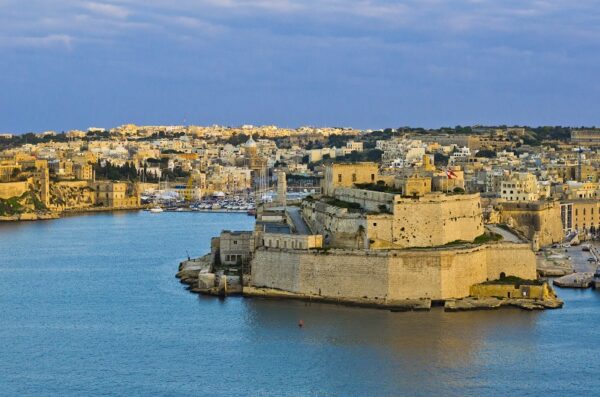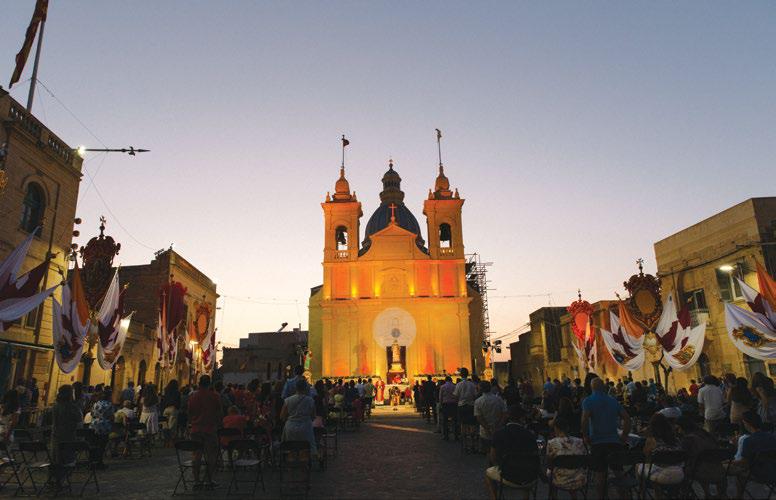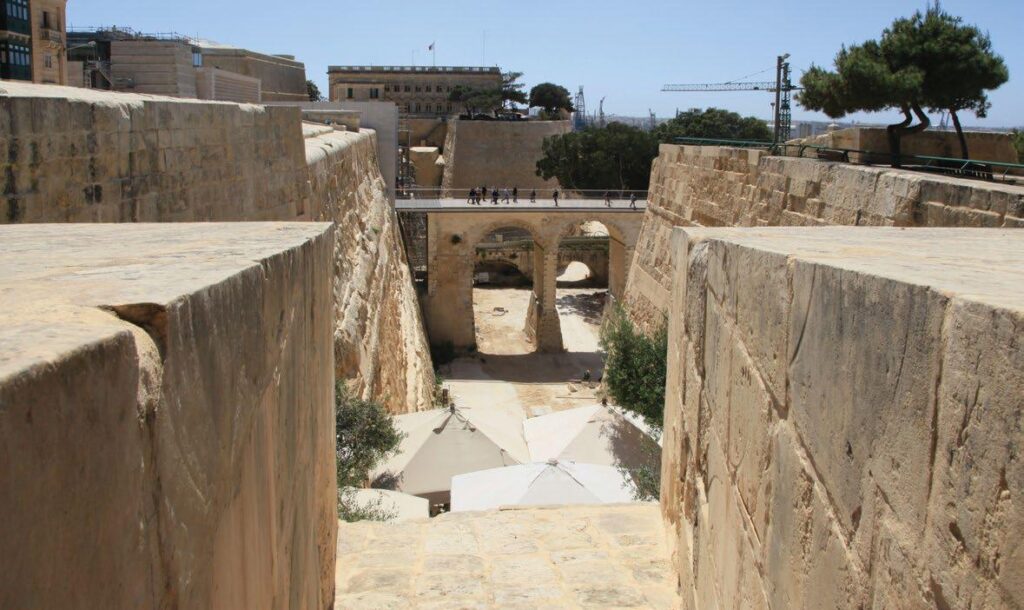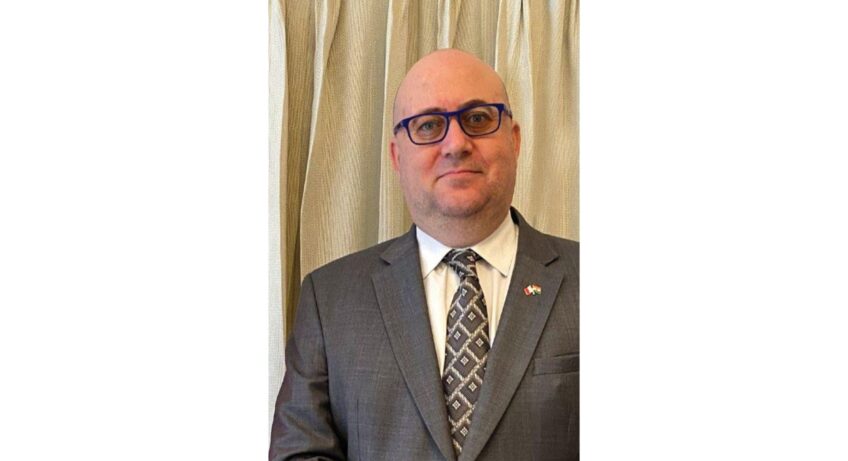Stay in Malta for exactly one year and visit a different church every day. That’s right!

This beautiful country is located in the Mediterranean Sea which experiences warm climate and breath-taking landscapes, making it a famous tourist destination. It’s a nation known for its historic sites related to a succession of rulers, including the Romans, Moors, Knights of
Saint John, French and British. It has numerous fortresses, megalithic temples Hal Saflieni Hypogeum, a subterranean complex of halls and burial chambers dating to circa 4000 B.C. Not only this, it is also home for many films and series productions.
TravelJingles in a rendezvous with H.E.Mr. Reuben Gauci, High Commissioner of Malta to India.
There are many things to do in Malta. Tell us about the three must-do things when in Malta.
The Maltese Islands are very welcoming and tourism has always been a pillar of our economy since Independence. When in Malta and Gozo, one should definitely visit the Pre-historic Temples of Ġgantija, Haġar Qim and Tarxien. Also, one should visit the old cities of Valletta, Mdina, Cospicua, Vittoriosa and Senglea in Malta along with Citadella in Gozo. Finally, one should enjoy the sea, sky and sun of our beautiful islands, especially the deep blue Mediterranean Sea which surrounds us, and by which we are surrounded as an eternal geographical presence which has given us its identity since the dawn of times. Malta is defined by its surrounding sea and the world has always come to us only through the sea up until aeroplanes were invented. So whoever visits Malta has to meet the sea which surrounds us amd ideally swim in it, possibly dive as well. It is no coincidence that our National Poet, Dun Karm Psaila, called the sea an
Eternal Youth, in one of his most famous poems in the Maltese Language.

The Arabs were among Malta’s early occupiers and therefore have a deep Arabic influence on it. Tell us about the Maltese culture.
As I said previously, the world came to Malta via the sea. The Arabs, a seafaring people, and also our immediate neighbours came to us and stayed in our Islands in the period 870-1090 AD. They left us their language, Arabic, which eventually evolved in our own Maltese language, which took a path of its own throughout centuries of successive European rule in Malta. Today Maltese is an interesting mix of Arabic, Italian and English. It is written in the Latin Alphabet, but its grammar follows mainly the rules of the Arabic language. Also, there are a lot of places in Malta which carry Arabic sounding names like Mdina, Żejtun, Rabat and Marsa.

Malta is home to UNESCO World Heritage Sites, Comment.
The Maltese Islands have three sites inscribed on the UNESCO World Heritage List. These are the City of Valletta, the Megalithic Temples and the Hal Saflieni Hypogeum.
In all, seven megalithic temples are found on the islands of Malta and
Gozo, each the result of an individual development, whilst the Hal Saflieni
Hypogeum is a rock-cut underground complex that was used both as a sanctuary
as well as for burial purposes, by the temple builders.
The capital of Malta, Valletta, is inextricably linked to the history of the
military and charitable Order of St John of Jerusalem. Built after the Great Siege of 1565 and named after Grandmaster Jean Parisot de la Valette, this fortified city has hundreds of monuments, all within a relatively small space, making it one of the most concentrated historic areas in the world.

Traditional Maltese food is rustic and based on the seasons
Well, fish is based on the seasons and since we are an island we have plenty of it. We even have our endemic fish called lampuki, which are usually caught in the end of summer and autumn. They are very good I can tell you, and living abroad makes me miss it a lot. Rabbit is our national dish, which could be found in many Maltese Restaurants apart, of course, in Maltese homes. I like my mother’s rabbit most of all, I have to admit, but my confidence in Maltese restaurants is very good. In Malta we also eat snails as well. In the past it used to be a way of finding cheap food in the countryside, especially when there was a famine. Now it has become a delicacy and once more, I miss it and enjoy it a lot, whenever I visit Malta. In Malta we also have our rustic beer, known as Cisk lager, and our packed snacks, known as Twistees. We are planning to have them imported in India. Finally, I cannot but mention Maltese bread, which for me is the best in the world. Recently, I have asked the renowned Bakery L’Opera, here in India, to bake some Maltese bread, and they are succeeding quite well!

The archipelago serves as the location for major film productions. Comment.
The Malta Film Studios is one of the largest production facilities in the
world. Having serviced over 200 feature films, television movies, documentaries and commercials, the facilities have an outstanding track record as a reliable and efficient production studio. The studio is renowned for its special effects water facility which has one indoor tank and two large exterior water tanks, situated along the coast, therefore enjoying a natural horizon. They are amongst the largest in the world. The experienced team of craftsmen are competent and professionals in their field, providing a high quality service at all times. The studio’s vast range of water, equipment and experienced water crew, can operate any form of special effects required, making it a world renowned base for water filming activities. In 2018, the film ‘Thugs of Hindustan’, screening Indian icons Amitabh Bachchan and Aamir Khan , was partially shot in Malta which at the time was still an untapped territory in Hindi cinema.

The country is home to some of the oldest temples in the world, such as the Megalithic Temples which have existed from the Bronze Stage.
The two temples of Ġgantija on Malta’s sister island of Gozo are notable for their gigantic Bronze Age structures. The Ġgantija Temples are the oldest, free-standing monuments in the world and are 29 complexes show how the tradition of temple-building was handed down in Malta. These temples were inscribed on the World Heritage List as a group and represent a unique architectural tradition that flourished on the Maltese Islands between 3600 and 2500 B.C.
As previously stated on your question regarding Malta’s UNESCO Heritage sites, the Hal Saflieni Hypogeum is a rock-cut underground complex that was used both as a sanctuary as well as for burial purposes by the temple builders. It was discovered during construction works in 1902. The three underground levels date from around 3600 to 2400 B.C.
The monument is considered one of the essential prehistoric monument’s in the world.
Malta is rich, with very famous diving and snorkelling spots. What are the adventurous activities that one can explore in Malta?
Maltese seas are beautiful both above and also, and possibly most especially, below. There is a whole world to be explored under the surface of the Maltese seas, and many enthusiasts do it regularly. Some of them even travel to the Maltese Islands for the specific purpose of diving
and snorkelling. In Malta one can also go kayaking, windsurfing, abseiling , rock climbing and horse riding, amongst others.

What is your favourite travel destination in the world and why, except Malta?
This is a difficult question, as I have many favourite destinations, and I
always discover new ones. But having said this, I think I will go for Italy as my favourite destination. Italy is a country of many beauties and the Italian language, which I believe to be the most beautiful language in the world, is part and parcel of the magnificence of Italy. Each city in this great country has a character of its own, so there is always something new to explore. Some Italian cities look like Maltese cities, also taking into account the strong influence of Italian culture on Malta throughout the centuries.
Do we have any similarity between India and Malta?
Malta and India have a shared past, a shared present and I dare to say a shared future. Being both former British colonies, Malta used to be a hub for British ships travelling to India when the Suez Canal was opened. Both our countries are members of the Commonwealth and I am proud to say that currently, Malta has a considerable Indian community living and working on the Islands, with more expected to reach Malta in the coming months. The Maltese and Indian peoples are similar in their positive attitudes towards work and towards life in general.

